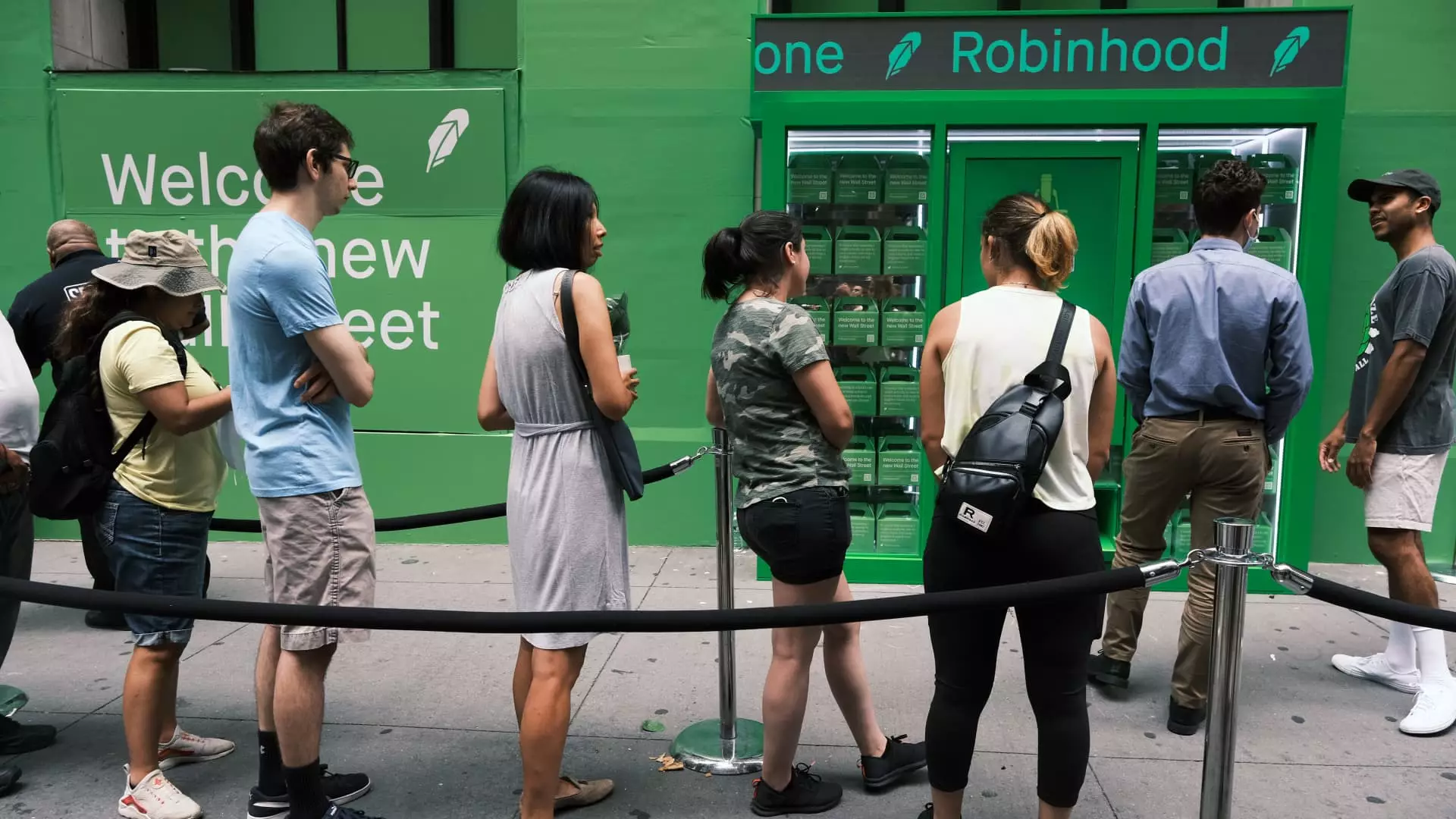The recent plunge in tech and fintech stocks has rocked the financial world, marking one of the most severe downturns in recent history. The Nasdaq Composite Index experienced its steepest drop since 2022, and at the heart of this turmoil lies the fintech sector. Companies like Robinhood and Coinbase witnessed staggering losses, with Robinhood plummeting 20% and Coinbase suffering an 18% decline. Such declines aren’t merely numerical; they are symptomatic of deeper market vulnerabilities that have left both investors and consumers rattled.
Cryptocurrency: A Dangerous Precipice
At the core of this financial wreckage is the shrinking value of Bitcoin, which has suffered a near 19% decline over the past month. After an initial surge following the midterm elections in late 2024, Bitcoin’s inevitable descent underscores the volatility that underscores cryptocurrency trading. The connection between traditional finance and the digital currency market creates a feedback loop where losses aren’t confined to digital assets but reverberate through companies like Robinhood and Coinbase, which are inherently reliant on cryptocurrency transactions for their earnings. Such instability and a lack of clarity in regulatory frameworks leave investors fearing not just daily fluctuations but a long-term erosion of confidence in these revolutionary financial technologies.
The Consumer Confidence Crisis
As the turmoil unfolds in fintech, we must consider another disturbing factor: declining consumer confidence. Recent data from the Conference Board shows that consumer confidence plummeted to 98.3, representing the most significant monthly drop since August 2021. This decline is alarming, particularly for online lenders and payment services, as they typically thrive when consumers are optimistic and willing to spend. The connection here could not be clearer: elevated economic uncertainty drives consumers to pull back on discretionary spending, amplifying pressures on fintech entities reliant on consumer credit and transactional volume.
A Shift Away from Discretionary Spending
Adding to this list of woes, companies focused on discretionary spending, like SoFi and Affirm, reported significant declines, both mirroring broader shifts in consumer behavior. Walmart’s recent announcements regarding a downturn in discretionary purchases hint at a more significant trend that poses serious challenges not just to individual companies but to the entire fintech ecosystem. Consumers are tightening their belts, prioritizing essentials over luxuries, thus dismantling the once-promising growth trajectories of buy-now-pay-later lending models.
The Regulatory Atmosphere: A Double-Edged Sword
While fintech rallied in the latter part of 2022 due to optimistic shifts in regulatory anticipation, the enthusiasm may have been premature. Analysts from JPMorgan Chase have pointed out that the current climate of uncertainty raises concerns about the sustainability of growth in this space. Although the Trump administration may have captivated many investors with its promises of deregulation, the reality is that a rollercoaster of regulatory pressures looms over fintech. This leads to a paradox where hope and apprehension coexist, but ultimately too much volatility can suffocate innovation.
A Cautionary Tale
In light of all this, the current situation serves as a cautionary tale for investors and enthusiasts alike. The techno-optimism that once surrounded the fintech boom has begun to give way to harsh realities. As companies at the confluence of finance and technology face headwinds like declining consumer confidence and volatile crypto markets, it becomes increasingly vital to approach this sector with both excitement and skepticism. Only by acknowledging these emerging pitfalls can we hope to navigate the choppy waters ahead with informed decisions.


Leave a Reply